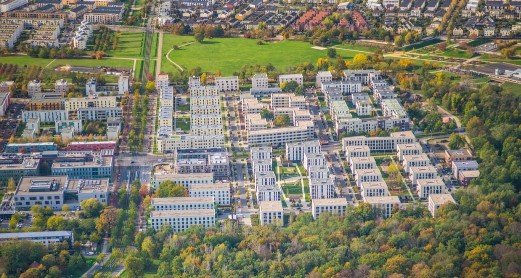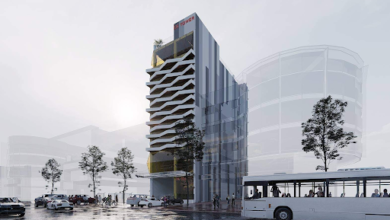Community-Centric Development: Real Estate’s Role in Urban Revitalization

Introduction to Community-Centric Development
Urban revitalization is a process aimed at improving the social, economic, and physical aspects of city life. This transformation often involves real estate projects that align with community needs and goals, an approach known as community-centric development. This method focuses on creating inclusive, sustainable, and resilient urban areas where everyone benefits from growth and development.
Understanding Urban Revitalization
Urban revitalization refers to the comprehensive transformation of underdeveloped or declining areas within a city. Historically, it has been driven by a mix of economic, social, and political forces aimed at reversing urban decay and promoting growth. The key goals of urban revitalization include improving living conditions, stimulating economic activity, and fostering social cohesion.
Real Estate’s Influence on Urban Development
Real estate development plays a crucial role in shaping the physical and social landscapes of urban areas. Through strategic investments, developers can transform blighted areas into vibrant communities. Examples include the redevelopment of abandoned industrial sites into residential or mixed-use properties, significantly altering the fabric of urban life.
Economic Impacts of Real Estate in Urban Revitalization
Real estate projects often serve as catalysts for economic growth in urban areas. They create jobs, stimulate local businesses, and can lead to increased property values. This economic boost can help rejuvenate neglected neighborhoods and promote overall economic development in the city.
Read also: Cute:60bey1hu9lw= How to Draw a Pumpkin
Social Impacts of Real Estate Developments
Beyond economics, real estate developments profoundly impact social structures within urban areas. Developments can influence community demographics, address social inequalities, and promote inclusive growth. However, it is essential to consider the potential for displacement and gentrification, ensuring developments benefit existing residents and new arrivals alike.
Key Principles of Community-Centric Development
Community-centric development prioritizes the needs and aspirations of local residents. Key principles include active stakeholder engagement, balancing growth with community needs, and fostering sustainable and resilient environments. This approach ensures developments are equitable and beneficial for all community members.
The Role of Public-Private Partnerships
Public-private partnerships (PPPs) are instrumental in driving urban revitalization. These collaborations between governments and private developers leverage the strengths of both sectors to deliver projects that benefit the public while ensuring financial viability. Successful PPPs have been pivotal in urban transformation projects worldwide.
Adaptive Reuse and Preservation in Urban Areas
Adaptive reuse involves repurposing old or historic buildings for new uses, preserving cultural heritage while meeting modern needs. This approach can be more sustainable than new construction and adds unique character to urban areas. Successful examples include converting warehouses into loft apartments or industrial buildings into art spaces.
Challenges in Implementing Community-Centric Development
Community-centric development faces several challenges, including the risk of gentrification, which can displace long-term residents. Balancing economic growth with social equity, addressing infrastructure needs, and securing funding are also significant hurdles developers and city planners must navigate.
Strategies to Mitigate Negative Impacts
To minimize the adverse effects of urban revitalization, strategies such as affordable housing initiatives, policy measures, zoning laws, and community benefit agreements are essential. These tools help ensure developments are inclusive, equitable, and beneficial to all residents.
Case Studies of Successful Urban Revitalization Projects
Several urban revitalization projects worldwide serve as benchmarks for successful community-centric development. These projects highlight the importance of comprehensive planning, community involvement, and sustainable practices. Examining these examples provides valuable insights into best practices and lessons learned.
The Future of Community-Centric Real Estate Development
The future of urban revitalization will be shaped by emerging trends such as technology integration, sustainability, and smart city initiatives. Real estate developers must anticipate these changes and adapt strategies to create resilient, future-proof communities.
Real Estate Innovations for Urban Revitalization
Innovations such as green building techniques, mixed-use developments, and smart technologies are increasingly important in urban revitalization. These innovations help create more sustainable, efficient, and vibrant urban spaces, contributing to long-term urban resilience.
Policy and Regulatory Frameworks Supporting Urban Revitalization
Supportive policies and regulatory frameworks are crucial for fostering community-centric development. Local, state, and federal governments play vital roles in creating an environment conducive to sustainable urban growth through zoning laws, land use regulations, and incentive programs.
Community Engagement and its Importance in Real Estate Projects
Community engagement is critical in ensuring that real estate projects align with local needs and aspirations. Effective engagement strategies build trust, promote cooperation, and ensure that development projects have broad-based support and are more likely to succeed.
Measuring the Success of Urban Revitalization Initiatives
Measuring the success of urban revitalization initiatives involves evaluating various performance indicators, such as economic growth, social inclusion, and environmental sustainability. Long-term assessments and community feedback are vital to understanding the true impact of these projects.
Conclusion: The Evolving Role of Real Estate in Urban Revitalization
Real Estate’, sustainability, and resilience. As urban challenges and opportunities change, the focus must remain on creating spaces that serve all residents and enhance urban life quality.
FAQs about Community-Centric Development and Real Estate’s Role
- What is community-centric development in real estate?
Community-centric development focuses on aligning real estate projects with the needs and goals of local communities, prioritizing inclusivity and sustainability. - How does real estate contribute to urban revitalization?
Real estate projects can drive economic growth, improve living conditions, and foster social cohesion by transforming underdeveloped areas into vibrant communities. - What are the benefits of community-centric development?
Benefits include sustainable urban growth, enhanced community engagement, improved social equity, and better alignment of projects with local needs. - What challenges are faced in such projects?
Challenges include gentrification, balancing economic and social goals, securing funding, and ensuring community participation. - How can gentrification be managed?
Strategies include affordable housing initiatives, inclusive zoning policies, and community benefit agreements that protect existing residents. - What future trends will impact urban revitalization?
Emerging trends include increased use of technology, focus on sustainability, smart city initiatives, and adaptive reuse strategies.






